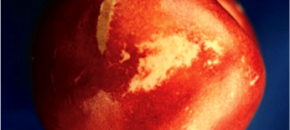FDA is expanding its outreach to small- and medium-size growers to address questions that have arisen since the proposed rule was issued in January 2013. According to Michael Taylor, Deputy Commissioner for Foods and Veterinary Medicine, FDA expects and welcomes questions that arise during the rulemaking process. In a new interview, he emphasizes that FDA […]
Continue reading...NJDA Plant Laboratory Offers Growers Mycotoxin Testing
The recent stretch of unusual rainy weather raises the potential of mycotoxin contamination in small grains, and other field or forage feed crops. Grain growers may be affected by price discounts and/or restricted markets. Mycotoxin contamination in animal feed and forage can lead to feed refusal, reduced productivity (reduced production of eggs, milk, and weight […]
Continue reading...Veg IPM Update: Week Ending 7/17/13
Vegetable IPM Report 7-17-13 – Click to View | Download | Print Current Week’s Pest Maps – Available Maps for the week are highlighted European Corn Borer Map Corn Earworm Map Brown Marmorated Stinkbug Map Vegetable IPM Pest Map Archive
Continue reading...Fruit IPM Report: Week Ending 7/20/13

Fruit IPM Report 7-20-13 – Click to View | Download | Print In this report: Brown Marmorated Stink Bug Peach Apple Grape Scouting Calendar Blueberry Trap Counts Brown Marmorated Stink Bug BMSB adults nymphs and egg masses are present in orchards, although far from a uniform pattern. Black light trap captures indicate a significant increase […]
Continue reading...Late Blight Update – 7/16/13
There have been no new reports of late blight in New Jersey or surrounding region over the past week. Importantly, now that late blight has been found in the region the threat for it to reappear will remain if weather conditions become favorable once again. The hot, dry weather forecasted this week should help reduce threat level for […]
Continue reading...Tomato Disease Forecasting Report 7-16-13
7-16-13 Tomato Report – Click to Download Disease severity values (DSVs) for early blight, septoria leaf spot, and tomato anthracnose development are determined daily based on leaf wetness (due to rainfall, dew) and air temperature. On a daily basis DSV values can range from 0 to 4 where 0 = no chance for disease development […]
Continue reading...